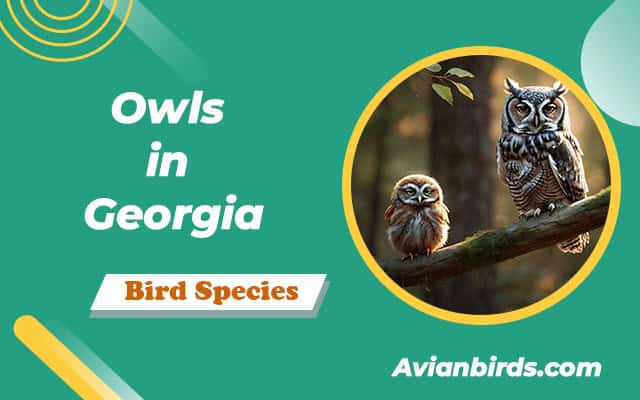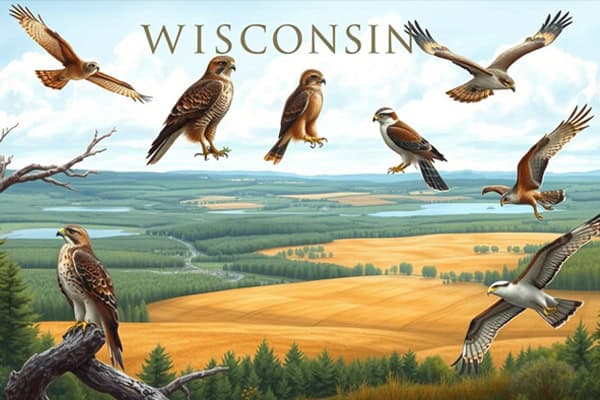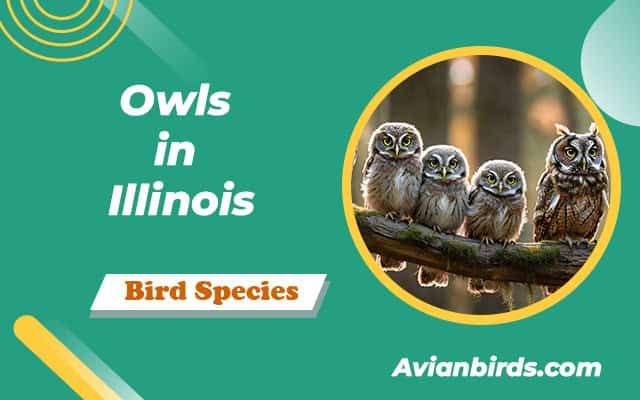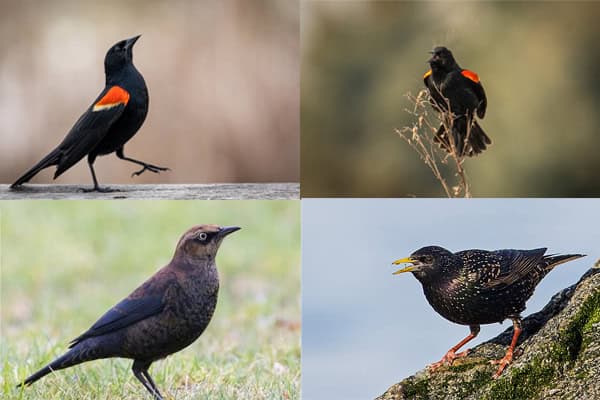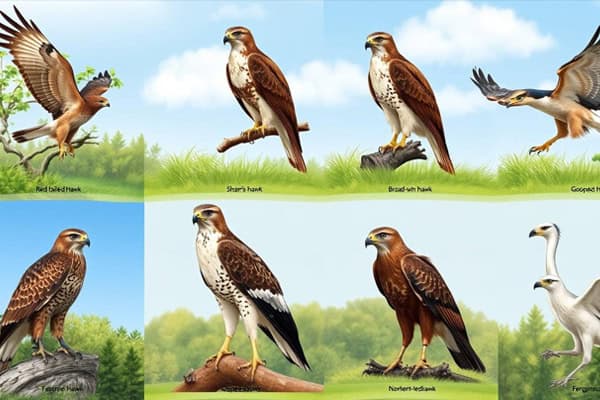7 Types of Owls in Georgia (ID Guide With Pictures)
Owls in Georgia offer a glimpse into the state’s rich avian tapestry. With 7 unique species out of the nation’s 19, they range from the visibly striking to the shy, elusive types. My research reveals their diverse sizes, calls, and habitats. Here, I’ll guide you through spotting these nocturnal wonders, from the common to the rare. Let’s embark on a journey to discover Georgia’s owls, where every hoot unravels a new mystery.
Here we’ll learn about 7 different types of Owls in Georgia
1. Eastern Screech-Owl
- Scientific name: Megascops asio
- Life span: 8 to 10 years
- Size: 16 to 25 cm
- Weight: 121 to 244 g
- Wingspan: 46 to 61 cm
- Status: Least Concern
The Eastern Screech-Owl is a bird that’s really good at living near people. It’s found in the eastern part of the United States, all the way down to Mexico. What’s cool about them is they come in two colors: reddish in the south and greyish in the north. Scientists think this is because of the colors of the forests they live in.

These owls mostly keep to themselves, except when it’s time to find a mate in April. When they’re trying to impress a potential partner, they do special things to show they want to be together forever. After they’ve mated, they make their homes in hollow trees in dark forests.
Even though they usually stick to one partner, sometimes male owls will have more than one mate. When that happens, the new mate might kick out the first one and lay her eggs in the nest.
Eastern Screech-Owls eat lots of different things, depending on what’s around them. In Georgia, they like to snack on small animals like mice and insects like beetles. They’ll even munch on worms and snails if they get the chance!
Where to look for them
In Georgia, Eastern Screech-Owls are quite versatile and can live in different places like big forests, parks, and even neighborhoods with lots of big trees. They’re not scared of people, so you might see them hanging around in places where people live, especially near parks and woods.
2. Great Horned Owl
- Scientific name: Bubo virginianus
- Life span: 25 – 50 years
- Size: 43 to 64 cm
- Weight: 1200 to 1600 g
- Wingspan: 91 to 153 cm
- Status: Least Concern
The Great Horned Owl is really adaptable and lives in lots of different places like deserts, wetlands, grasslands, cities, and forests. They’re not just found in North America, but also as far south as Brazil. These birds are active at night and their brown feathers help them blend in with their surroundings. The “horns” on their heads are actually feathers, which might help them communicate with other birds, but scientists aren’t sure.

When it’s time to find a mate in North America, Great Horned Owls get started as early as January. The male owl leads the way in finding a good spot to nest and tries to impress the female by doing fancy flying moves and stomping around the nest.
Where to look for them
The Great Horned Owl is really good at living in different places, so you can find them in lots of spots around Georgia. They’re mostly active at night, so you might hear their unique hooting sounds to know they’re nearby.
Some places where you might spot them include:
- Chattahoochee River National Recreation Area
- Okefenokee National Wildlife Refuge
- Piedmont National Wildlife Refuge
- Pine Mountain Trail
3. American Barn Owl
- Scientific name: Tyto furcata
- Life span: 10 years
- Size: 34 to 38 cm
- Weight: 400 to 600 g
- Wingspan: 29 to 36 cm
- Status: Least Concern
The American Barn Owl is a fascinating and mysterious bird known for its striking, ghost-like looks. It sleeps during the day in tree holes or thick bushes and comes out at night to hunt.
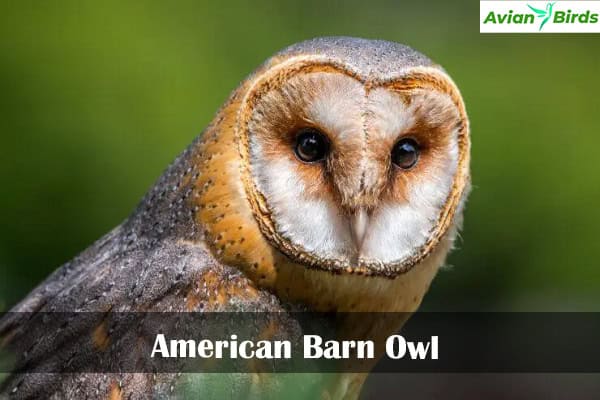
Belonging to a group that includes Western and Eastern Barn Owls, the American Barn Owl is stunningly beautiful. It has a face, chest, and belly that are creamy white, while its upper body and wings are pale brown. Its unique appearance has sparked many myths and stories, portraying it as a magical or otherworldly creature.
During nesting season, which is usually from March to June, American Barn Owls form lifelong partnerships. The male owl searches tirelessly for the perfect nesting spot, like a hidden tree hole, a snug nesting box, or a quiet cliff, and marks his territory by flying energetically around the area.
Where to look for them
The best chance to see these nighttime hunters is during their breeding season, which typically happens from March to June. They’re more active and lively during this time, so you might have an easier time spotting them.
Some places where you might see them include:
- Atlanta Botanical Garden
- Okefenokee National Wildlife Refuge
- Piedmont National Wildlife Refuge
- Crooked River State Park
4. Barred Owl
- Scientific name: Strix varia
- Life span: 8 years
- Size: 40 to 63 cm
- Weight: 610 to 1,150 g
- Wingspan: 96 to 125 cm
- Status: Least Concern
Barred Owls are famous for sticking close to home, with studies showing they usually don’t travel more than 6 miles from where they were born. Despite this, they’re widespread across the eastern United States and southern Canada, showing off their beautiful brownish-grey feathers with dark stripes underneath.

Like American Barn Owls, Barred Owls also make lifelong partnerships when they mate. Male owls woo their partners by nodding and bowing with their wings open wide, hoping for a positive response. This romantic behavior usually starts in February, and they build their nests in tree holes in thick forests.
In Georgia, Barred Owls eat mostly small mammals like mice and voles, but they also snack on birds, reptiles, and insects. Sometimes, they’ll even tackle bigger prey like rabbits and squirrels.
Where to look for them
If you’re hoping to spot Barred Owls, you might want to check out these places:
- Okefenokee National Wildlife Refuge
- Piedmont National Wildlife Refuge
- Lake Blackshear Resort and Golf Club
- Sweetwater Creek State Park
5. Short-eared Owl
- Scientific name: Asio flammeus
- Life span: 12 years
- Size: 34 to 43 cm
- Weight: 200 to 475 g
- Wingspan: 85 to 110 cm
- Status: Least Concern
The Short-Eared Owl is found all over the world and is quite common. It’s easy to recognize with its small black bill and a body covered in brown spots. Its wings and tail have bold brown bars. What makes it stand out is that it often hunts during the daytime, unlike most other owls.
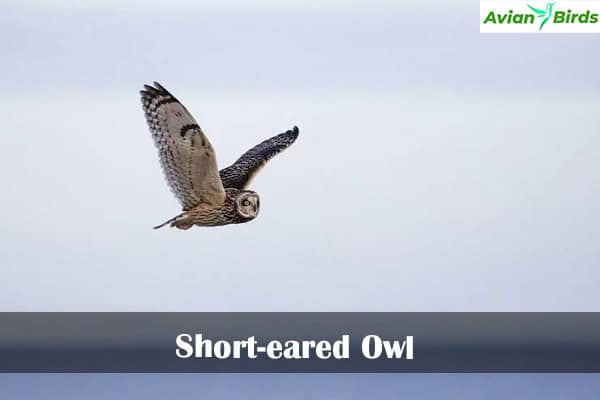
These owls have an interesting nesting habit. They mate for just one breeding season, usually starting in March, and live together in groups. Unlike other owls, they build their nests on the ground in places like prairies, meadows, and tundras.
In Georgia, Short-Eared Owls mostly eat small mammals like voles, shrews, and rodents. They also eat rabbits, weasels, and hares. They snack on reptiles, amphibians, insects, and birds like sparrows and larks. Since they hunt during the day, they fly low to the ground in grasslands and meadows, making the most of whatever food they find.
Where to look for them
If you’re searching for Short-Eared Owls in Georgia, look for them in open spaces with low vegetation. Here are some nature areas where you might have luck spotting them:
- Okefenokee National Wildlife Refuge
- Savannah National Wildlife Refuge
- Piedmont National Wildlife Refuge
6. Long-eared Owl
- Scientific name: Asio otus
- Life span: 10 to 27 years
- Size: 31 to 40 cm
- Weight: 160 to 435 g
- Wingspan: 86 to 102 cm
- Status: Least Concern
The Long-Eared Owl is a master of disguise, blending perfectly into dense foliage with its brown and black feathers that mimic pine trees. These owls are widespread globally, and their haunting calls can be heard echoing through wooded areas, especially during the breeding season which starts around March. They’re monogamous, and males establish their territory by singing and flapping their wings in a distinct rhythm, while females search for nesting sites.
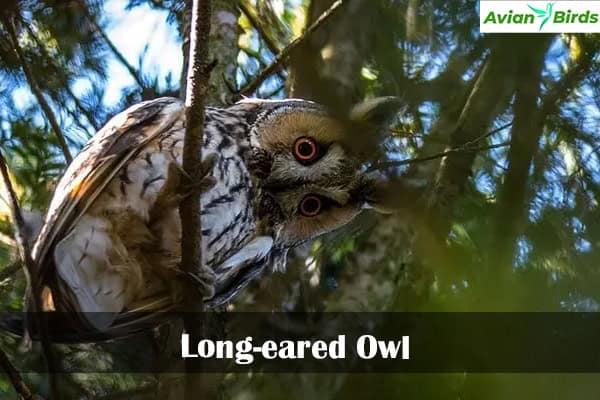
Unlike many other owls, Long-Eared Owls don’t build their own nests; they prefer to use abandoned hawk nests or hollow tree trunks. In Georgia, they mainly eat small mammals like mice, voles, and shrews, along with insects, birds, and other small animals. Sometimes they’ll snack on reptiles and amphibians too. They usually hunt by perching and waiting for prey to come close, but they can also fly low to hunt on the ground.
Where to look for them
If you’re hoping to spot Long-Eared Owls, these areas might be worth exploring:
- Atlanta Botanical Garden
- Piedmont Park
- Okefenokee National Wildlife Refuge
- Chicopee Woods Nature Preserve
Check Our Previous Articles:
7. Northern Saw-whet Owl
- Scientific name: Aegolius acadicus
- Life span: 7 to 17 years
- Size: 17 to 22 cm
- Weight: 54 to 151 g
- Wingspan: 42 to 56.3 cm
- Status: Least Concern
The Northern Saw-Whet Owl, a small bird found across much of North America, including Georgia, is known for its secretive ways. It has a round, creamy face streaked with brown, a dark pointed beak, and striking yellow eyes.
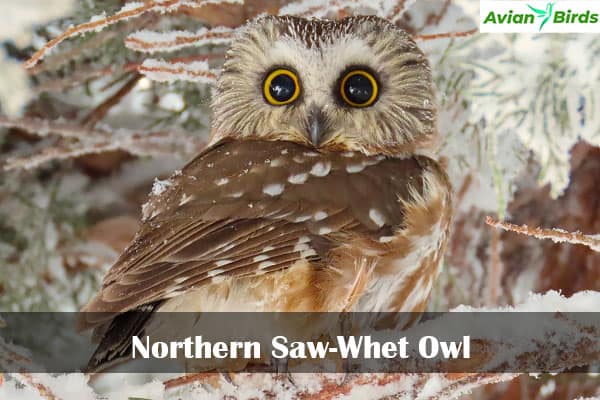
Its belly is pale white with delicate brownish markings, while its upper body is rich dark brown with bright white spots. Its name comes from its call, which sounds like a saw being sharpened on a whetstone.
These owls are monogamous for a single breeding season, starting in March. However, when prey is plentiful, males may mate with multiple females. They make their homes in existing holes in trees created by woodpeckers, or in man-made nest boxes.
In Georgia, Northern Saw-Whet Owls mostly eat small mammals like voles, mice, and shrews, along with the occasional insect, bird, or other small creature. They’re clever hunters, always ready to seize any opportunity for a meal.
Where to look for them
If you’re searching for the Northern Saw-Whet Owl, consider exploring these areas:
- Chattahoochee National Forest
- Dawson Forest Wildlife Management Area
- Okefenokee National Wildlife Refuge
- Pine Log Wildlife Management Area
Frequently Asked Questions
Q1. What owls are most common in Georgia?
Barred Owls are among the most common owl species in Georgia.
Q2. Where can I see owls in Georgia?
You can see owls in Georgia at places like Okefenokee National Wildlife Refuge, Piedmont National Wildlife Refuge, and Chattahoochee National Forest.
Q3. How do you attract owls in Georgia?
To attract owls in Georgia, provide a suitable habitat with trees for roosting and nesting, along with food sources like rodents. Installing owl nest boxes can also help.
Q4. What do barred owls eat in Georgia?
In Georgia, Barred Owls primarily eat small mammals such as mice, voles, and shrews, along with insects, birds, and other small animals.

